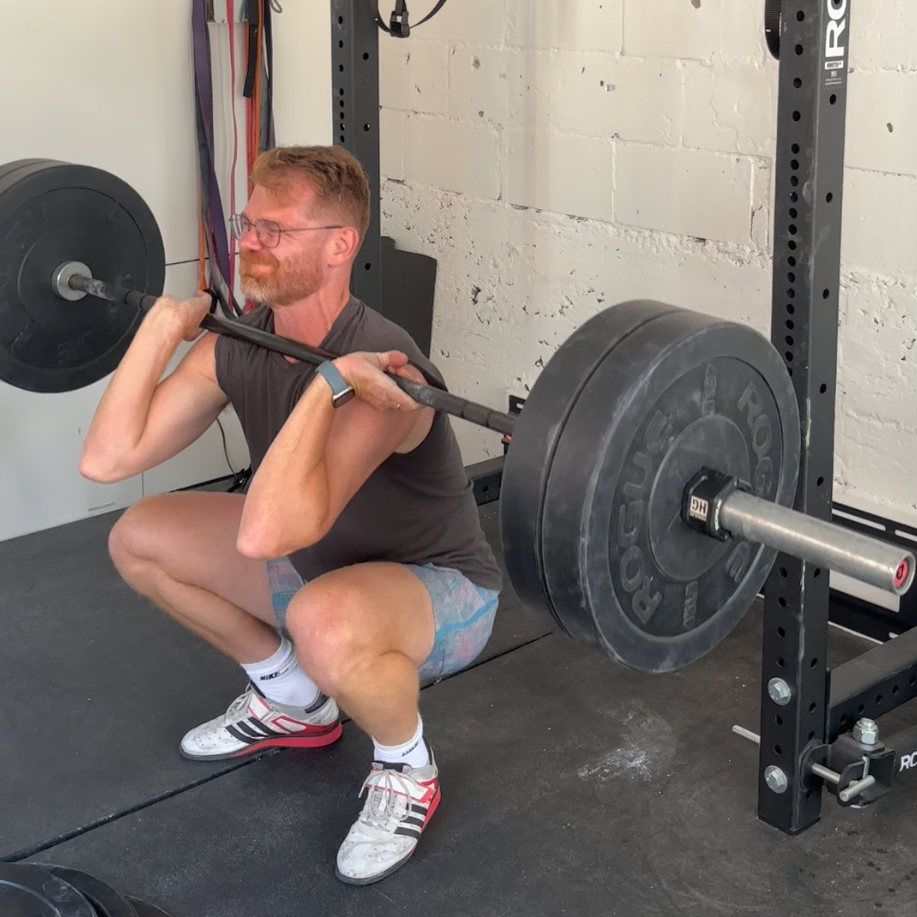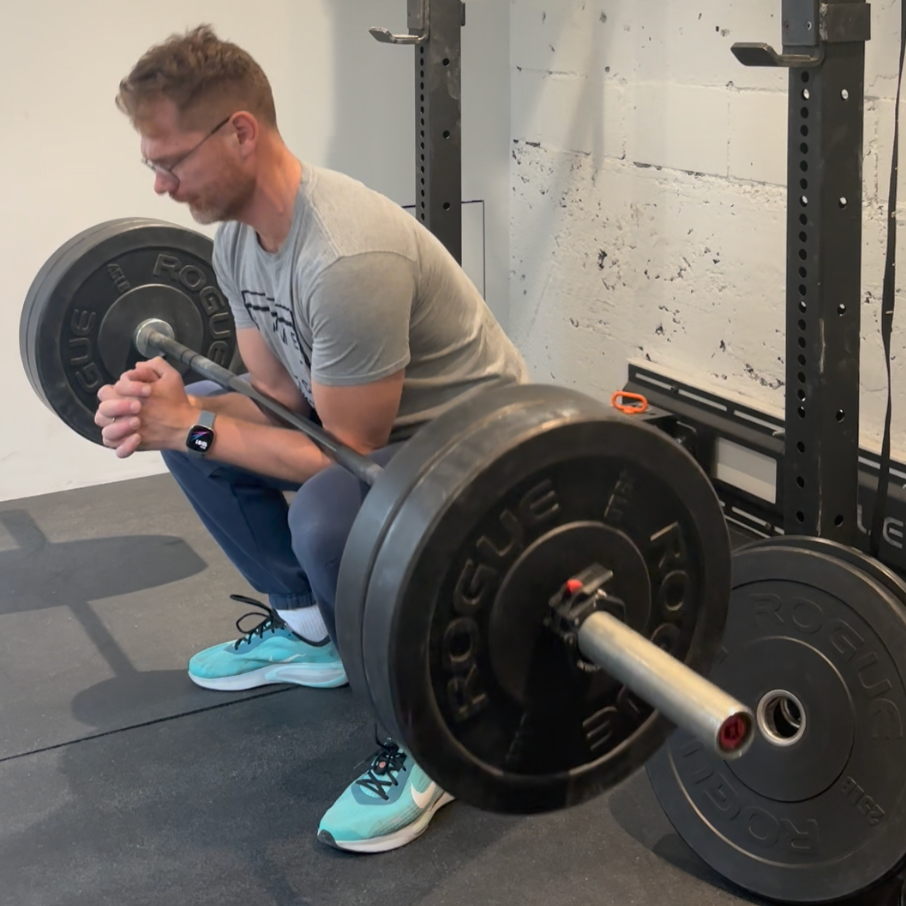If you’ve followed me for some time, you know I’m a big proponent of squatting — and really, any scalable lower-body strength exercise — for tennis players.
That includes both bilateral lifts (like the back and front squats) and unilateral or quasi-unilateral variations such as the split-squat, lunge, and skater squat.
I’m also a big believer in full range of motion (ROM) lifting. It recruits more muscle, has a higher potential to stimulate neuromuscular adaptations, helps us train the muscles and patterns through their full range — and are just more challenging in general.
But oftentimes, I encounter players or clients who have a hard time achieving full ROM in a back squat (or any lift where the bar sits on the back of their shoulders). Reasons might include limited ankle or hip mobility, poor torso control or strength, or simply a lack of exposure to the movement.
That’s where anterior-loaded variations come in. My go-tos include the dumbbell goblet squat (especially for younger athletes and beginners) and front squats or other front rack movements. Placing the load in front shifts the center of mass forward and encourages a more upright torso. This usually allows for greater ROM — and because of that, greater tension on the quadriceps.
While the front rack position is a staple of mine — not just for the lower-body benefits, but also for the shoulder and wrist mobility it demands — that same upper-extremity requirement is exactly why some players won’t get the most out of it.
For example, if you’ve got tight shoulders, sensitive elbows, or restricted wrist range — all common in tennis players — getting into a proper front rack position can be a real challenge.
Before I move on to the alternative, I’ll say this: you should still aim to improve your shoulder, elbow, and wrist ROM using the front rack position. Not only will it help you load movements like front squats, front-loaded lunges, or power cleans (another great lift for tennis players), gradually exposing yourself to the position will also improve your active mobility through those joints. So don’t eliminate front rack work entirely; just progress it slowly and intentionally.
Back to our scenario: you need a strong lower-body training stimulus, but you can’t get deep in a back squat — and the front rack position kills your wrists (or shoulder).
So what’s the alternative?
Front rack position - obviously can be demanding on the wrists.
Zercher position - still great depth + strength potential with little downside.
Enter the Zercher position.
The Zercher position is simple: hold the barbell in the crook of your elbows. That’s it. You can hold it slightly further out or closer to your torso. You can interlock your fingers (that’s my preference) or just clench your fists. Your stance can be traditional, wider, or narrower — it all depends on your comfort, preference, and the specific lift you’re doing.
The main point here: the Zercher position allows for an anterior load without stressing the wrists (or shoulders).
It’s an obvious go-to for anyone with a wrist injury who still wants to squat while rehabbing. But beyond that, it’s a position that just feels very natural overall.
A few points to note before I share a few Zercher variations below:
You’ll get used to the bar in your elbows — trust me. Like anything else, you’ll adapt. If it’s uncomfortable at first, a long-sleeve shirt helps (or a pad if needed).
Expect your back to work hard. While the front squat challenges the anterior trunk more, the Zercher is great for building strength and robustness in the posterior chain.
Keep your elbows close so they slide between your thighs rather than hitting them at the bottom of the squat.
It’s not just about squats. I like using the Zercher position for split-squats, lunges, and true unilateral movements. It also works great for deadlift and RDL variations — especially if you’re looking to gradually expose your spine to loaded flexion (which you should, progressively — but more on that in another post).
Without further ado, here’s a non-exhaustive list of Zercher variations I think you’ll benefit from — and ones you should definitely try.
Zercher Squat - the staple.
Zercher Split-Squat - so nice on the hips.
Zercher Lateral Squat - loadable + easier to get tension on the groin.
Zercher Skater Squat - easiest way to progress this lift (compared to vests, chains etc).
Zercher SLDL - a nice way to get some spinal flexion + tension through the hammies.
Don’t sleep on the Zercher position. Give it a try and watch your leg - and trunk strength - improve!



